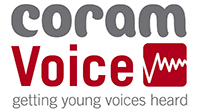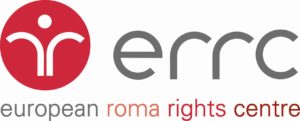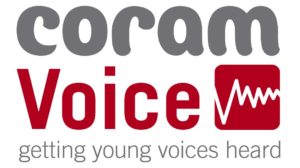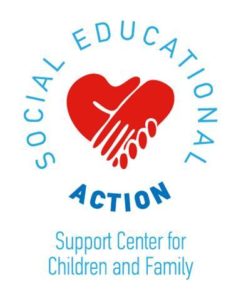Strengthening the capacity of professionals in the EU to fulfil the rights of vulnerable children
This project is co-funded by the Fundamental Rights and Citizenship Programme of the European Union and part funded by the Allan and Nesta Ferguson Charitable Trust and involves partners from ten European countries:
Coram Children’s Legal Centre and Coram Voice from the UK, FICE Bulgaria, Czech Helsinki Committee, the University College Cork, Children of Slovakia Foundation, Estonian Centre for Human Rights, European Roma Rights Centre (Hungary), Fondazione L’Albero della Vita (Italy), Empowering Children Foundation (Poland), Social Educational Action (Greece), and FCYA Hungary.
International standards, and many national laws, recognise that children and young people have a right to express their views – and to have their wishes and feelings reflected in decisions affecting them.
Unlocking Children’s Rights is an innovative training resource, which has been successfully piloted across Europe. It enables professionals and practitioners working with children to:
- Strengthen their skills and knowledge of children’s rights
- Enable children and young people to express their views
- Communicate effectively and sensitively with children and young people in a professional context
- Ensure children participate meaningfully in decisions affecting them
The modules are all available for download below and are:
- Module 1: Introduction to child rights
- Module 2: Introduction to child development and communication
- Module 3: Communication skills
- Module 4: The child-friendly justice guidelines
Guidance for using the training materials
Facilitator’s guide
The facilitators’ guide provides detailed instructions on how to deliver each module and activity of the training materials.
Participant workbooks and PowerPoint slides
Module 2 – Introduction to Child Development and Communication
Closing Module
Module tests
Module 1 - Introduction to child rights
Test-summary
0 of 10 questions completed
Questions:
- 1
- 2
- 3
- 4
- 5
- 6
- 7
- 8
- 9
- 10
Information
Test your knowledge and understanding of child rights. The following multiple choice test is based on the contents of Module 1 of the training package.
You have already completed the test before. Hence you can not start it again.
Test is loading...
You must sign in or sign up to start the test.
You have to finish following test, to start this test:
Results
0 of 10 questions answered correctly
Time has elapsed
You have answered 0 out of 0 questions correctly
Categories
- Not categorized 0%
-
Congratulations! You have answered over 90% correctly.
For a certificate, please click here.
- 1
- 2
- 3
- 4
- 5
- 6
- 7
- 8
- 9
- 10
- Answered
- Review
-
Question 1 of 10
1. Question
The UNCRC has the following range of rights
Correct
See Activity 1.1 for more information
Incorrect
See Activity 1.1 for more information
-
Question 2 of 10
2. Question
The articles of the UNCRC are sometimes grouped into three categories – known, in English, as the 3Ps. These are:
Correct
See Activity 1.1 for more information
Incorrect
See Activity 1.1 for more information
-
Question 3 of 10
3. Question
Which of the following is not an underpinning principle of the UNCRC:
Correct
See Activity 1.2 for more information
Incorrect
See Activity 1.2 for more information
-
Question 4 of 10
4. Question
When all children are forbidden from wearing head-coverings at school, this is an example of:
Correct
See Activity 1.2A for more information
Incorrect
See Activity 1.2A for more information
-
Question 5 of 10
5. Question
Direct discrimination may be justified in the following circumstances:
Correct
See Activity 1.2A for more information
Incorrect
See Activity 1.2A for more information
-
Question 6 of 10
6. Question
The best way to determine the best interests of a child is:
Correct
See Activity 1.2B for more information
Incorrect
See Activity 1.2B for more information
-
Question 7 of 10
7. Question
Which of the following statements best describes the way the best interests of the child should be considered in matters affecting children?
Correct
See Activity 1.2B for more information
Incorrect
See Activity 1.2B for more information
-
Question 8 of 10
8. Question
Which of the following activities fall(s) under the right to ‘life, survival and development’?
Correct
See Activity 1.2C for more information
Incorrect
See Activity 1.2C for more information
-
Question 9 of 10
9. Question
As long as a child is present at a hearing, that is sufficient to fulfil the child’s right to participation
Correct
See Activity 1.2D for more information
Incorrect
See Activity 1.2D for more information
-
Question 10 of 10
10. Question
There is a minimum age below which children should not be allowed to speak at hearings that affect them
Correct
See Activity 1.2D for more information
Incorrect
See Activity 1.2D for more information
Module 2 – Introduction to child development and communication
Test-summary
0 of 10 questions completed
Questions:
- 1
- 2
- 3
- 4
- 5
- 6
- 7
- 8
- 9
- 10
Information
Test your knowledge and understanding of child development and communication. The following multiple choice test is based on the contents of Module 2 of the training package.
You have already completed the test before. Hence you can not start it again.
Test is loading...
You must sign in or sign up to start the test.
You have to finish following test, to start this test:
Results
0 of 10 questions answered correctly
Time has elapsed
You have answered 0 out of 0 questions correctly
Categories
- Not categorized 0%
-
Congratulations! You have answered more than 90% of questions correctly
To download a certificate for this module please click here
- 1
- 2
- 3
- 4
- 5
- 6
- 7
- 8
- 9
- 10
- Answered
- Review
-
Question 1 of 10
1. Question
The training references six categories of child development. Which of the following is not one of these categories:
Correct
See Activity 2.1 for more information
Incorrect
See Activity 2.1 for more information
-
Question 2 of 10
2. Question
True or false: There is a set pattern for child development, including language development and social skills. When a child does not follow this pattern, it is always cause for concern and should be assessed professionally.
Correct
See Activity 2.1 for more information
Incorrect
See Activity 2.1 for more information
-
Question 3 of 10
3. Question
Understanding child development is important for all professionals working with children because:
Correct
See Activity 2.1 for more information
Incorrect
See Activity 2.1 for more information
-
Question 4 of 10
4. Question
According to attachment theory, the relationships a child develops in the first ___ of its life shape future development and outcomes
Correct
See Activity 2.2 for more information
Incorrect
See Activity 2.2 for more information
-
Question 5 of 10
5. Question
The following factors help to develop secure attachment
Correct
See Activity 2.2 for more information
Incorrect
See Activity 2.2 for more information
-
Question 6 of 10
6. Question
Self-esteem is:
Correct
See Activity 2.2 for more information
Incorrect
See Activity 2.2 for more information
-
Question 7 of 10
7. Question
The following factors help to develop self-esteem
Correct
See Activity 2.2 for more information
Incorrect
See Activity 2.2 for more information
-
Question 8 of 10
8. Question
Resilience is:
Correct
See Activity 2.2 for more information
Incorrect
See Activity 2.2 for more information
-
Question 9 of 10
9. Question
The following factors help to develop resilience:
Correct
See Activity 2.2 for more information
Incorrect
See Activity 2.2 for more information
-
Question 10 of 10
10. Question
Misunderstandings in communication can happen because:
Correct
See Activity 2.3 for more information
Incorrect
See Activity 2.3 for more information
Module 3 – Communication skills
Test-summary
0 of 10 questions completed
Questions:
- 1
- 2
- 3
- 4
- 5
- 6
- 7
- 8
- 9
- 10
Information
Test your knowledge and understanding of communication skills. The following multiple choice test is based on the contents of Module 3 of the training package.
You have already completed the test before. Hence you can not start it again.
Test is loading...
You must sign in or sign up to start the test.
You have to finish following test, to start this test:
Results
0 of 10 questions answered correctly
Time has elapsed
You have answered 0 out of 0 questions correctly
Categories
- Not categorized 0%
-
Congratulations! You have answered more than 90% of questions correctly
To download a certificate for this module please click here
- 1
- 2
- 3
- 4
- 5
- 6
- 7
- 8
- 9
- 10
- Answered
- Review
-
Question 1 of 10
1. Question
There are several reasons why professionals should communicate with children. Which of these is not presented in the training materials?
Correct
See Activity 3.1 for more information
Incorrect
See Activity 3.1 for more information
-
Question 2 of 10
2. Question
When should professionals communicate with children?
Correct
See Activity 3.2 for more information
Incorrect
See Activity 3.2 for more information
-
Question 3 of 10
3. Question
What makes a communication environment unfriendly for children?
Correct
See Activity 3.3 for more information
Incorrect
See Activity 3.3 for more information
-
Question 4 of 10
4. Question
Which of these factors should determine whether a professional should offer confidentiality of communication to a child or not?
Correct
See Activity 3.4 for more information
Incorrect
See Activity 3.4 for more information
-
Question 5 of 10
5. Question
Which of the following is not a barrier to communication?
Correct
See Activity 3.6 for more information
Incorrect
See Activity 3.6 for more information
-
Question 6 of 10
6. Question
Which of the following is a good way to cope with difficult behaviour by a child?
Correct
See Activity 3.8 for more information
Incorrect
See Activity 3.8 for more information
-
Question 7 of 10
7. Question
Alternative methods of communication are only necessary for children who have learning difficulties or special educational needs:
Correct
See Activity 3.10 for more information
Incorrect
See Activity 3.10 for more information
-
Question 8 of 10
8. Question
Which of the following is not a potential part of a ‘communication tool kit’?
Correct
See Activity 3.10 for more information
Incorrect
See Activity 3.10 for more information
-
Question 9 of 10
9. Question
Once you have communicated with enough children, it’s no longer important to conduct any individual assessment or planning before talking to a new child
Correct
See Activity 3.11 for more information
Incorrect
See Activity 3.11 for more information
-
Question 10 of 10
10. Question
Which of the following are potential resources for help in communication?
Correct
See Activity 3.13 for more information
Incorrect
See Activity 3.13 for more information
Module 4 – The child-friendly justice guidelines
Test-summary
0 of 10 questions completed
Questions:
- 1
- 2
- 3
- 4
- 5
- 6
- 7
- 8
- 9
- 10
Information
Test your knowledge and understanding of the child-friendly justice guidelines. The following multiple choice test is based on the contents of Module 4 of the training package.
You have already completed the test before. Hence you can not start it again.
Test is loading...
You must sign in or sign up to start the test.
You have to finish following test, to start this test:
Results
0 of 10 questions answered correctly
Time has elapsed
You have answered 0 out of 0 questions correctly
Categories
- Not categorized 0%
-
Congratulations! You have answered more than 90% of questions correctly
To download a certificate for this module please click here
- 1
- 2
- 3
- 4
- 5
- 6
- 7
- 8
- 9
- 10
- Answered
- Review
-
Question 1 of 10
1. Question
The child-friendly justice guidelines apply to under-18s in which of the following contexts:
Correct
See Activity 4.1 for more information
Incorrect
See Activity 4.1 for more information
-
Question 2 of 10
2. Question
The child-friendly justice guidelines apply only in the UK:
Correct
See Activity 4.1 for more information
Incorrect
See Activity 4.1 for more information
-
Question 3 of 10
3. Question
Child-friendly justice is
Correct
See Activity 4.1 for more information
Incorrect
See Activity 4.1 for more information
-
Question 4 of 10
4. Question
The child-friendly guidelines only cover matters during judicial proceedings
Correct
See Activity 4.1 for more information
Incorrect
See Activity 4.1 for more information
-
Question 5 of 10
5. Question
Which of the following is a component of a child-friendly justice system at all points during proceedings?
Correct
See Activity 4.1 for more information
Incorrect
See Activity 4.1 for more information
-
Question 6 of 10
6. Question
Which of the following groups of professionals is not affected by the child-friendly justice guidelines:
Correct
See Activity 4.1 for more information
Incorrect
See Activity 4.1 for more information
-
Question 7 of 10
7. Question
The child-friendly justice guidelines are not relevant to immigration proceedings:
Correct
See Activity 4.1 for more information
Incorrect
See Activity 4.1 for more information
-
Question 8 of 10
8. Question
The child-friendly justice guidelines are not relevant to care proceedings:
Correct
See Activity 4.1 for more information
Incorrect
See Activity 4.1 for more information
-
Question 9 of 10
9. Question
The child-friendly justice guidelines are relevant to criminal proceedings:
Correct
See Activity 4.1 for more information
Incorrect
See Activity 4.1 for more information
-
Question 10 of 10
10. Question
How many sections are there in the child-friendly justice guidelines?
Correct
See Activity 4.2 for more information
Incorrect
See Activity 4.2 for more information

This project is co-funded by the Fundamental Rights and Citizenship Programme of the European Union
The project is also part funded by the Allan and Nesta Ferguson Charitable Trust.
Please note: the contents of this publication and webpage are the sole responsibility of Coram Children’s Legal Centre and project partners and can in no way be taken to reflect the views of the European Commission.














